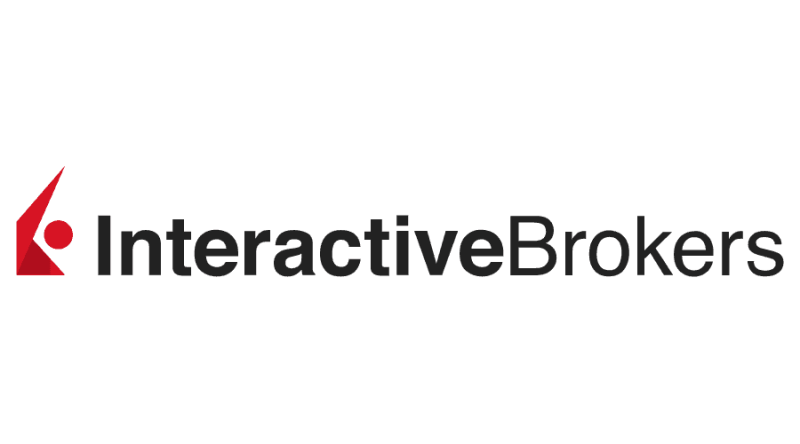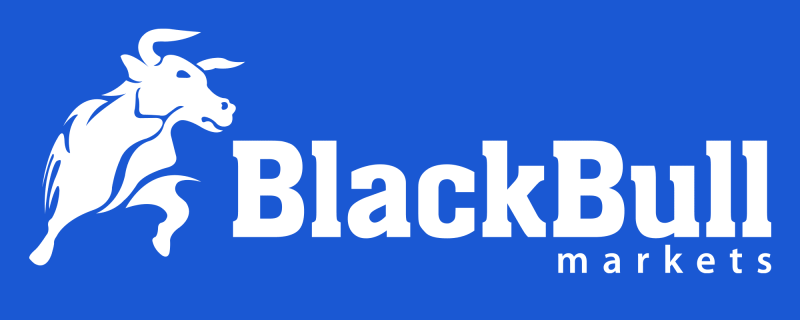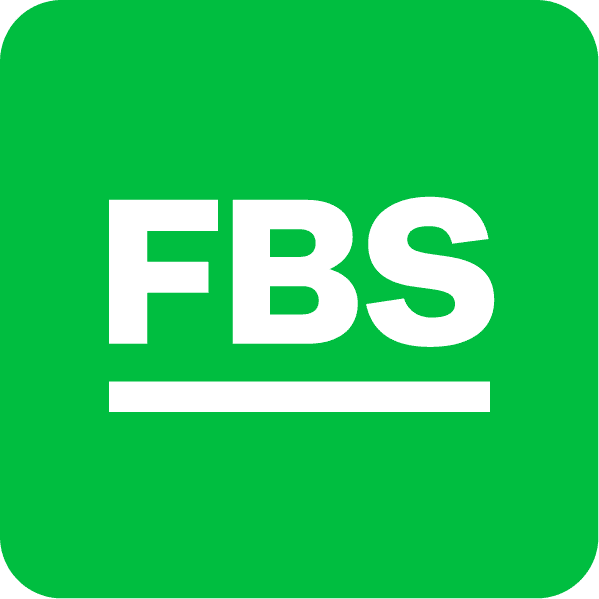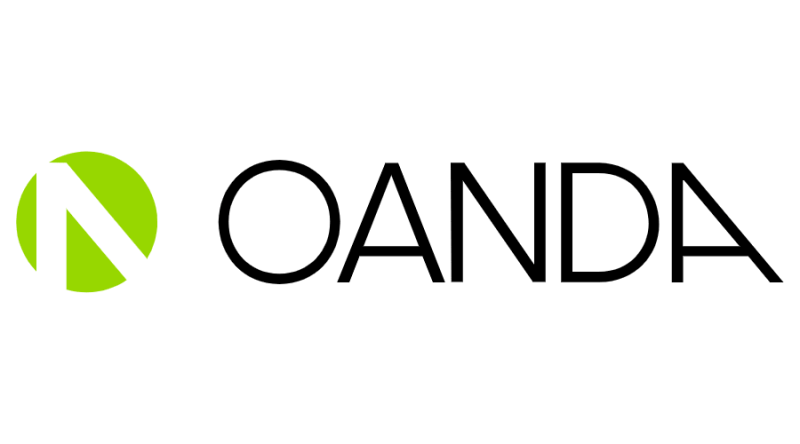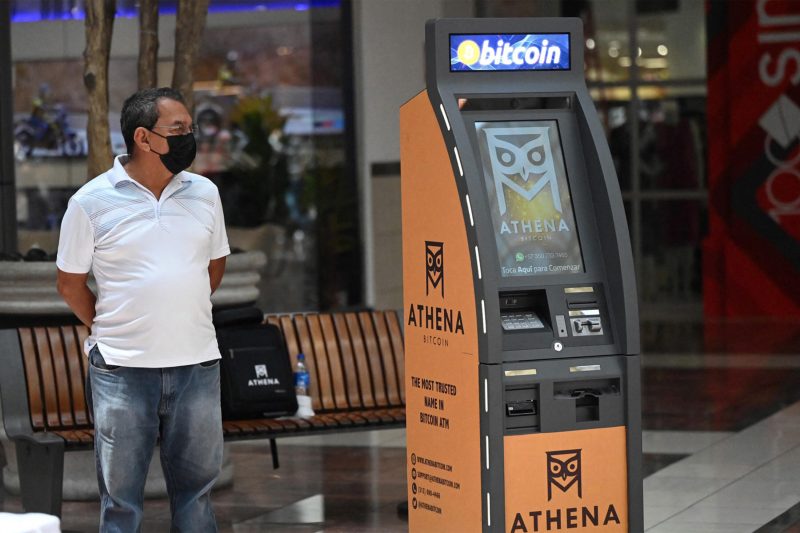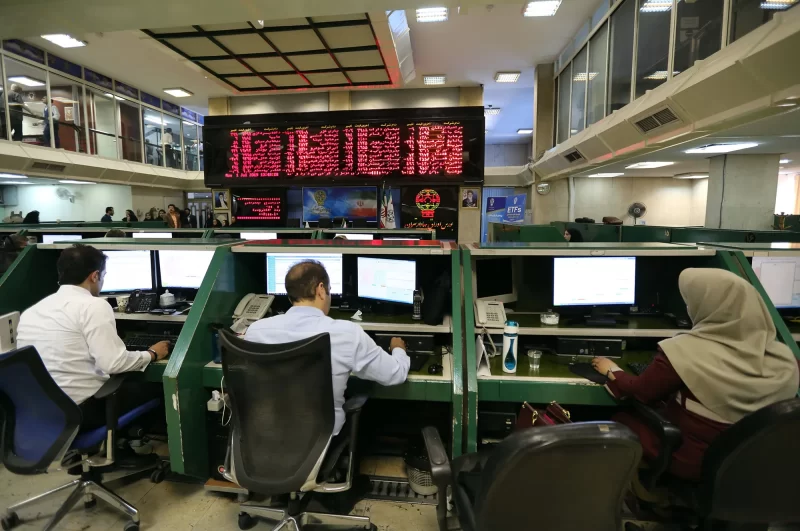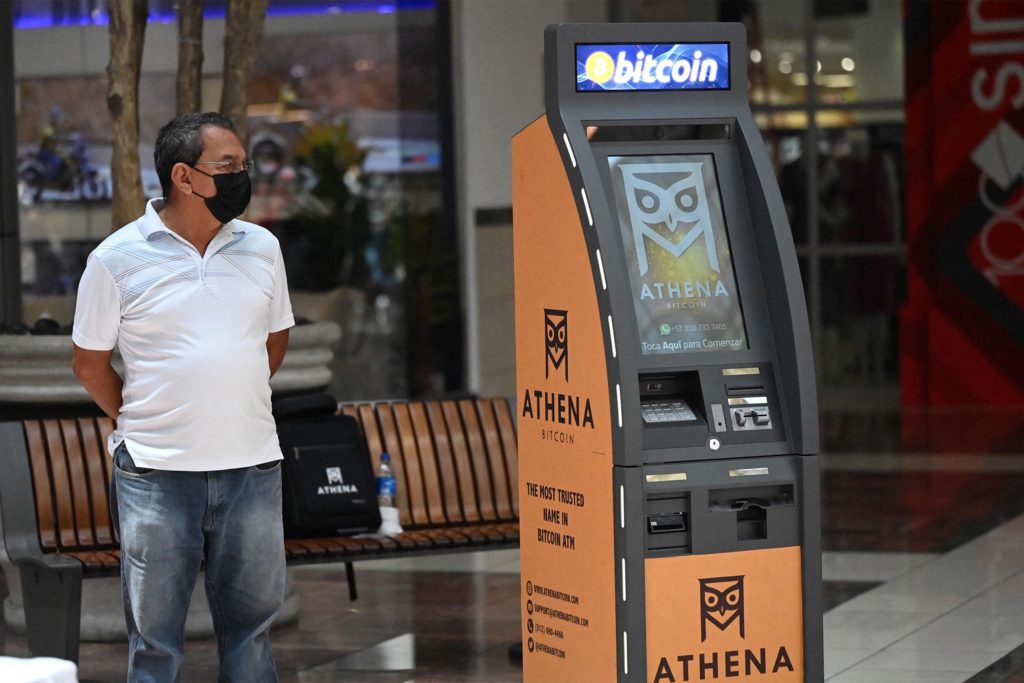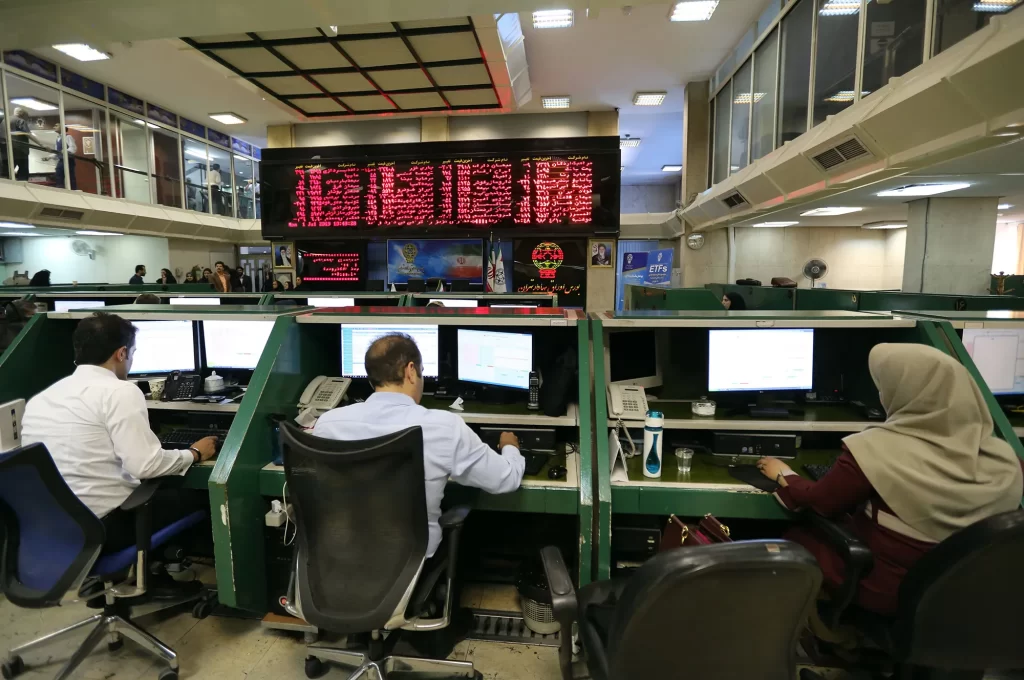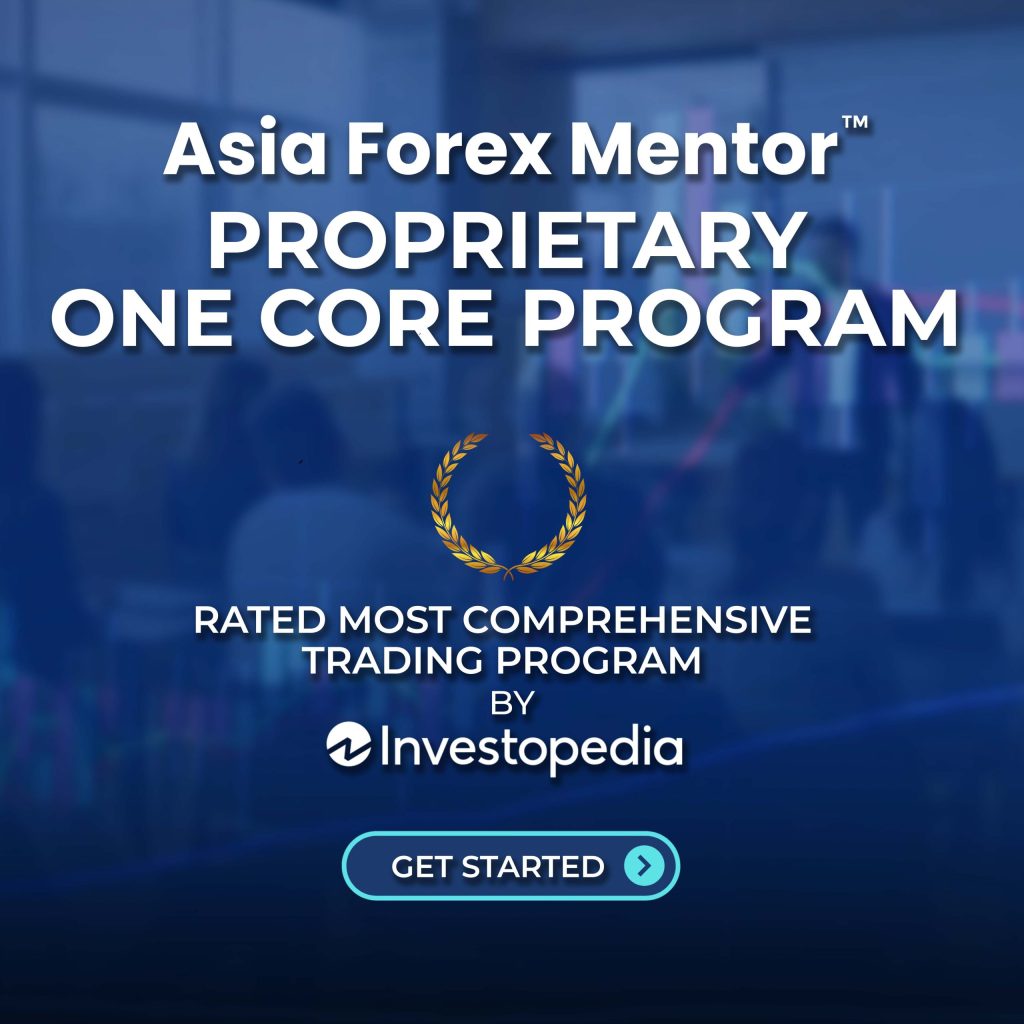With the United States’s status as the world’s largest economy, coupled with a potentially healthy market supported by the country’s large population, one would imagine that there’s a long line of US forex brokers jostling to offer brokerage services to millions of eager traders.
One would be wrong.
For one thing, traders in the US tend to gravitate more towards stock trading, often choosing to acquire shares over currencies. So, even though the New York session tends to have the most significant impact on currency rate fluctuations, the amount of US-based retail traders tends to be relatively small.
However, that’s not the most significant reason for the limited number of forex brokers in the United States. The biggest reason is that the trading environment in the US presents a series of unique challenges to brokers. The Commodity Futures Trading Commission (CFTC) and the National Futures Association (NFA), both independent bodies, tightly regulate forex brokers in the United States, enforcing rigorous restrictions that include a limit on leverage provided.
The regulations also limit US citizens’ ability to trade with brokers that are not domiciled in the country unless they’ve been registered with the NFA.
These regulations were designed to provide more security for the investments of forex traders in the US. The downside is that there’s a shortage of brokers willing or able to provide brokerage services under these conditions.
In this article, we’ve examined the forex brokers in the USA and rated them based on the value and services they offer. We’ve also included the lowdown on the US forex regulations and how they are different from what obtains elsewhere.
9 Best Forex Brokers For US Clients
Best US Forex Brokers
#1. IC Markets
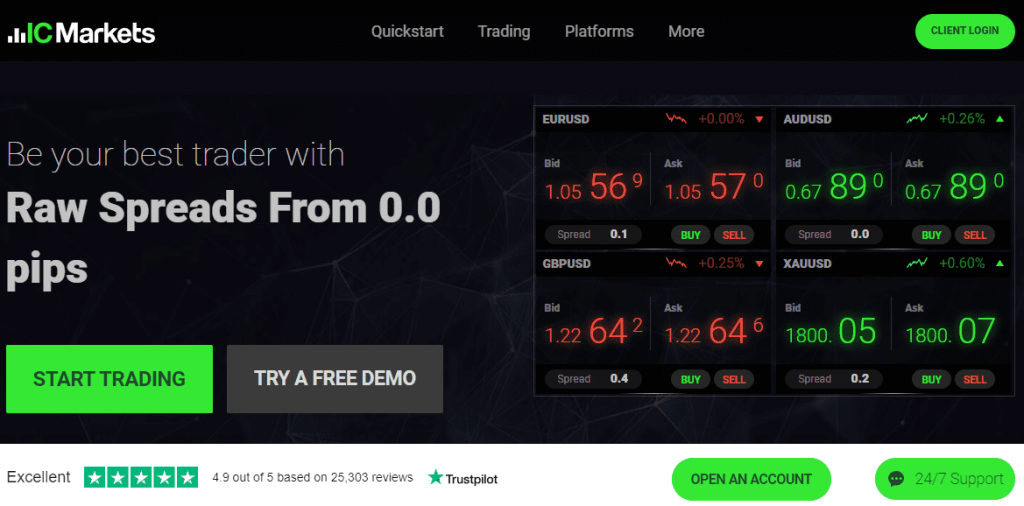
Founded in 2007, IC Markets (International Capital Markets) is one of the largest Forex brokers in Australia, offering access to a broad spectrum of markets to traders globally. The broker is known for its high-speed trade execution, tight spreads, and a diverse range of trading products including Forex, commodities, indices, bonds, futures, and cryptocurrencies.
IC Markets provides its clients with a choice of three major trading platforms: MetaTrader 4, MetaTrader 5, and cTrader, all of which are available on web, desktop, and mobile interfaces. These platforms cater to different trading preferences and come equipped with advanced charting tools, numerous technical indicators, and automated trading capabilities.
The broker is regulated by multiple top-tier financial authorities such as the Australian Securities and Investments Commission (ASIC), the Seychelles Financial Services Authority (FSA), and the Cyprus Securities and Exchange Commission (CySEC), which assures traders of a safe and transparent trading environment.
IC Markets also places a strong emphasis on education and provides a wealth of resources, including video tutorials, webinars, and market analysis to help traders improve their skills and stay updated on market trends.
Advantages and Disadvantages of Trading with IC Markets
Withdrawal and Fees of IC Markets
One of the key strengths of IC Markets is its competitive and transparent pricing structure. The broker offers two types of accounts: Standard and Raw Spread. The Standard account incorporates all fees into the spread, while the Raw Spread account charges a commission but offers spreads from zero pips, which can result in significant savings for active traders.
There are no fees for depositing funds into your IC Markets account, and the broker covers most of the transaction costs associated with withdrawals. However, international bank transfers can attract a small charge by some banks, which is something to keep in mind.
In terms of non-trading fees, IC Markets does not charge any account inactivity or maintenance fees, which is a plus for traders who may not trade regularly.
It's always a good idea to review the current fee structure directly on the broker's website or through their customer service to ensure that you have the most up-to-date information.
#2. XM
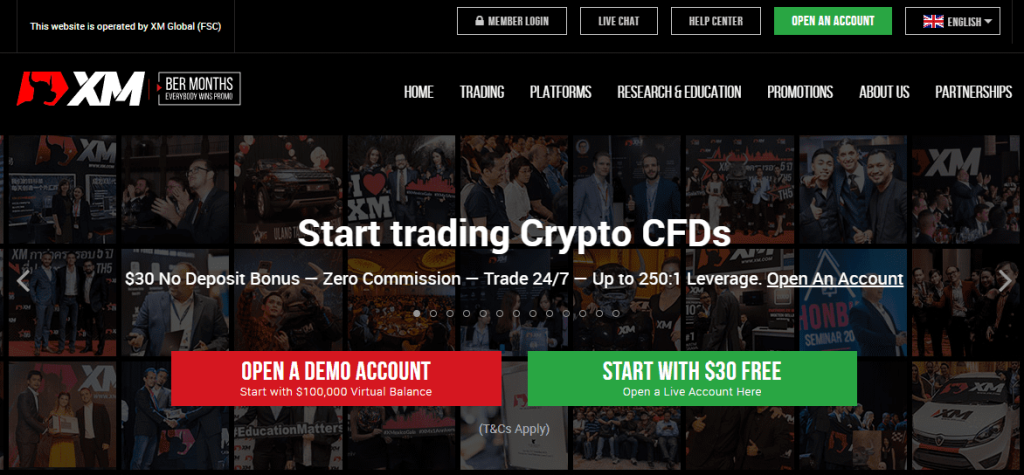
Established in 2009, XM is a globally recognized forex and CFD broker that serves clients in over 190 countries. The broker offers more than 1,000 financial instruments, including forex pairs, commodities, equity indices, precious metals, energies, and shares.
XM is well-regarded for its robust technological infrastructure, providing traders with the popular MetaTrader 4 and MetaTrader 5 platforms, along with their proprietary XM WebTrader. These platforms support a variety of functionalities, such as algorithmic trading and one-click trading, and are available across web, desktop, and mobile devices.
XM has earned a reputation for its commitment to client satisfaction, offering 24/5 customer service in over 20 languages, regular webinars, and on-site seminars in various locations worldwide to assist traders in improving their skills and market knowledge. The broker is regulated by several high-profile regulatory bodies, including the Australian Securities and Investments Commission (ASIC) and the Cyprus Securities and Exchange Commission (CySEC), ensuring a safe and secure trading environment.
Advantages and Disadvantages of Trading with XM
Withdrawal and Fees of XM
XM adopts a transparent and fair pricing approach. The broker offers two main types of accounts: the Standard Account and the Micro Account, both of which are commission-free and only charge through the spread. The spread varies depending on the market you're trading, but for the popular EUR/USD forex pair, the spread starts from 1 pip on the Standard Account.
One of the significant advantages of trading with XM is that the broker does not charge any fees for both deposits and withdrawals. This is beneficial for traders who frequently move money in and out of their accounts. Withdrawals are typically processed on the same day if the request is made within the standard operating hours.
However, XM does impose an inactivity fee. If no trading activity has occurred for more than 90 days, a monthly fee of $5 is deducted from the account balance until the account is active again or the balance reaches zero.
It's essential to review the broker's fee structure and withdrawal terms on their website or by contacting their customer support to stay updated with the latest information.
#3. HF Markets
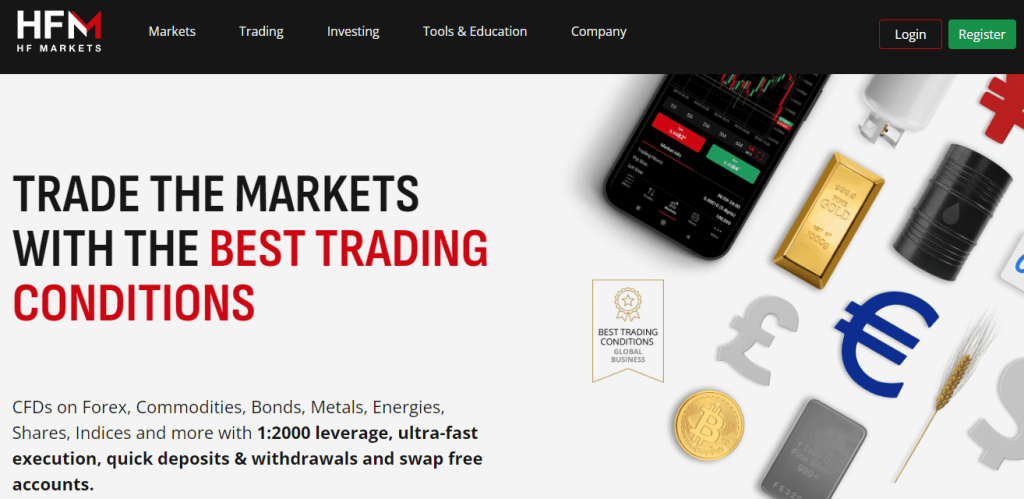
HF Markets, more commonly known as HotForex, is a multi-asset broker that has been providing trading services since 2010. This award-winning broker is well-recognized in the forex industry and offers trading services to both retail and institutional clients.
HF Markets provides a broad range of trading instruments including forex, commodities, indices, shares, bonds, and cryptocurrencies. They offer multiple account types to cater to different trading preferences and levels of experience, from Micro accounts for beginners to Zero Spread accounts for experienced traders looking for tighter spreads.
One of the strengths of HF Markets is their investment in trading technology. They offer both MetaTrader 4 and MetaTrader 5 platforms, along with a variety of tools such as the HF App, Premium Trader Tools, and Autochartist to aid in efficient trading. The broker is regulated by several top-tier regulatory bodies including the Financial Conduct Authority (FCA) in the UK, the Dubai Financial Services Authority (DFSA), and the Cyprus Securities and Exchange Commission (CySEC).
HF Markets also places a strong emphasis on trader education and support, offering an array of resources such as webinars, video tutorials, and market analysis to assist traders in their trading journey.
Advantages and Disadvantages of Trading with HF Markets
Withdrawal and Fees of HF Markets
HF Markets offers competitive and transparent pricing. They operate a hybrid business model, offering both spread-only and commission-based accounts. For example, the Zero Spread account has a minimum spread of 0 pips but charges a commission on trades, whereas the Premium account has a slightly wider spread but no commission is charged.
One of the advantages of trading with HF Markets is that they do not charge any fees for deposits or withdrawals, which can lead to significant savings over time. However, it's important to note that some banks or payment providers may charge their own fees for transactions.
An inactivity fee applies to accounts that remain dormant for more than six months. This is $5 per month, and it is only charged if the account balance is above zero.
Always consult the HF Markets' website or their customer service for the most current information on their fee structure and withdrawal process to avoid unexpected costs or delays.
#4. Interactive Brokers
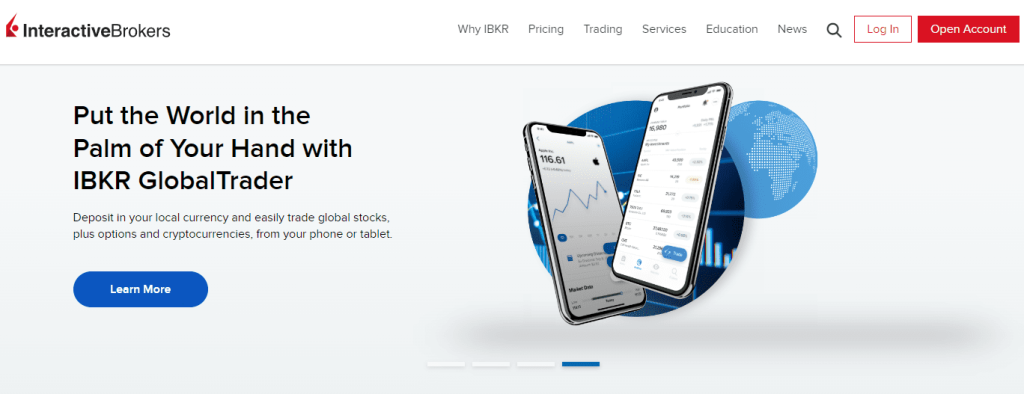
Interactive Brokers is a well-established and highly reputable online brokerage firm, founded in 1978. Over the years, it has built a robust platform that caters to active, advanced traders, and investors who are looking for broad access to a wide range of investment options.
Interactive Brokers provides an extensive selection of tradable securities, including stocks, options, futures, forex, bonds, ETFs, and mutual funds across 135 markets in 33 different countries. This impressive reach has made it an appealing choice for both domestic and international traders.
The company has invested significantly in its trading platforms, providing sophisticated features that meet the needs of professional traders. Their flagship platform, Trader Workstation (TWS), is a global trading system which allows traders to monitor markets and execute trades from a single screen.
Interactive Brokers is regulated by several top-tier financial authorities, including the Securities and Exchange Commission (SEC), the Financial Industry Regulatory Authority (FINRA), and the Commodity Futures Trading Commission (CFTC), ensuring a high level of security and transparency for its customers.
Advantages and Disadvantages of Trading with Interactive Brokers
Withdrawal and Fees of Interactive Brokers
Interactive Brokers operates on a tiered pricing model that charges fees based on the trading volume. For stocks, ETFs, and warrants, the maximum per order ranges from 0.0035 to 0.0005 USD per share depending on the monthly volume. For options, futures, and futures options, the cost per contract reduces as the volume increases.
Interactive Brokers provides one free withdrawal request per month. After that, a fee is applied to subsequent withdrawals, which varies based on the method of withdrawal and currency. For example, in the US, an ACH withdrawal is free, while a wire withdrawal incurs a fee of $10.
There are also certain non-trading fees to be aware of. Interactive Brokers charges an inactivity fee if the account balance is less than $2,000 and doesn't generate at least $20 in commissions per month. The fee is equal to $20 minus the commissions paid that month.
Given the complex nature of its fee structure, it's advisable to thoroughly understand all potential costs associated with trading via Interactive Brokers. Always check the broker's website or contact their customer service for the most accurate and updated information.
#5. BlackBull Markets
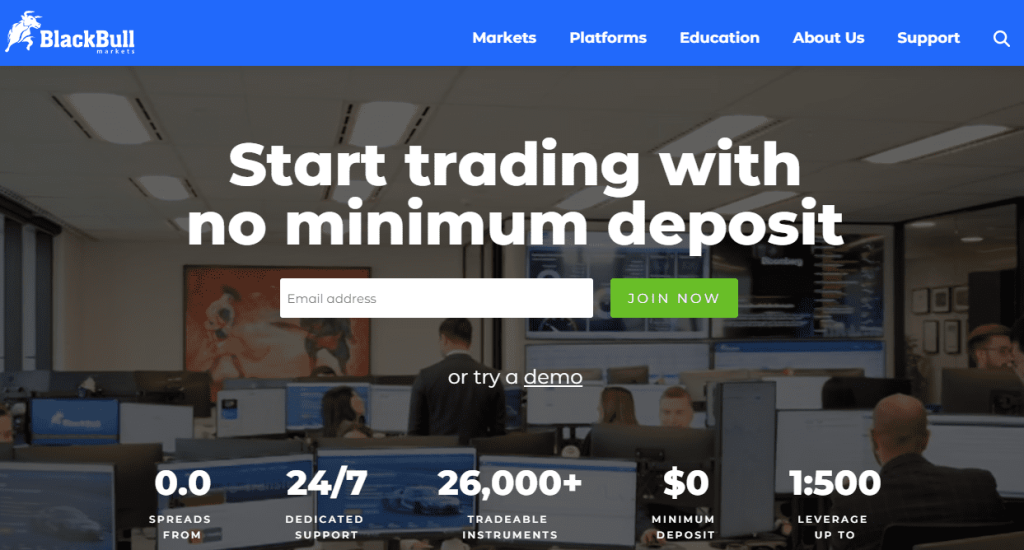
BlackBull Markets is a New Zealand-based online ECN forex broker that was established in 2014. It is known for offering an institutional-grade trading environment to retail clients, featuring fast execution speeds, raw ECN spreads, and high-quality customer service.
BlackBull Markets offers access to a broad array of financial instruments across forex, commodities, indices, and metals. To cater to the varying needs of traders, the broker provides three types of accounts – Standard, Prime, and Institutional, each with different features and services.
The broker utilizes the popular MetaTrader 4 platform, known for its reliability, user-friendly interface, and advanced charting tools. Traders can also benefit from BlackBull Markets' proprietary client portal, which allows for seamless account management and comes with an array of features including one-click deposits and withdrawals, live chat support, and account analytics.
BlackBull Markets is regulated by the Financial Markets Authority (FMA) in New Zealand, which ensures that they adhere to strict financial standards, offering peace of mind to traders regarding the safety of their funds.
Advantages and Disadvantages of Trading with BlackBull Markets
Withdrawal and Fees of BlackBull Markets
BlackBull Markets operates on a commission-based pricing model, with the exception of their Standard Account, which is commission-free but has a slightly wider spread. For the Prime and Institutional accounts, a commission is charged per trade but these accounts enjoy tighter spreads, which can be as low as 0.1 pips for the EUR/USD pair.
In terms of withdrawal fees, BlackBull Markets doesn't charge any fees for credit card withdrawals. However, there's a $5 fee for domestic bank transfers and a $20 fee for international bank transfers. It's important to note that while BlackBull Markets does not charge deposit fees, charges from intermediary banks may apply.
The broker doesn't charge an inactivity fee, but dormant accounts (accounts with no trading activity for six months) may be archived.
Given that fees can vary and change over time, it's recommended to check BlackBull Markets' official website or get in touch with their customer support to get the most accurate and up-to-date information on their fee structure and withdrawal procedures.
#6. FP Markets
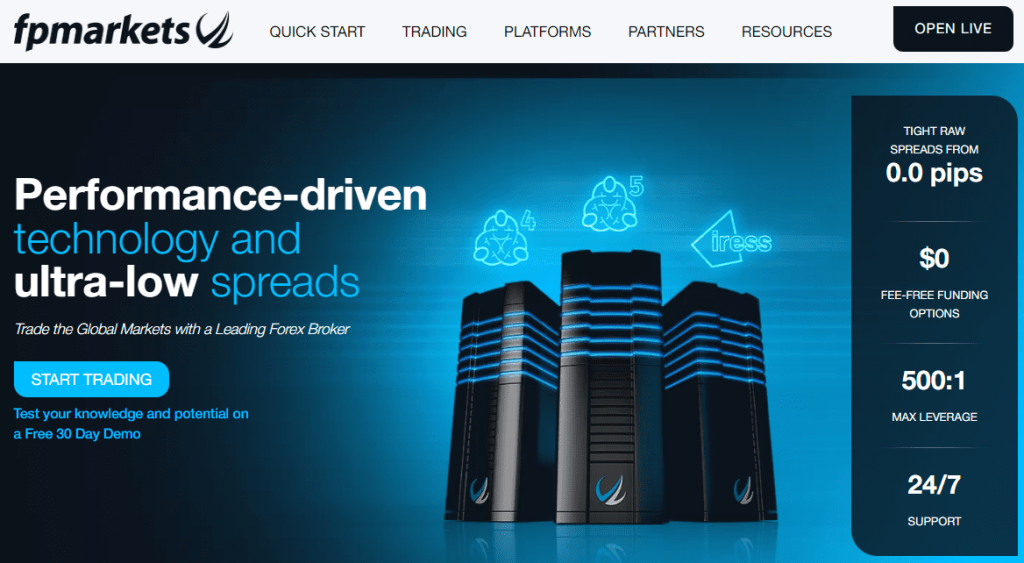
First Prudential Markets, more commonly known as FP Markets, is an Australian forex broker established in 2005. It has garnered a solid reputation in the financial industry due to its blend of reliable technology, diverse product offering, and commitment to providing excellent customer service.
FP Markets provides its clients with access to a comprehensive range of trading instruments across Forex, equities, metals, commodities, indices, and cryptocurrencies. It caters to a wide spectrum of traders by offering a selection of account types, including the Standard (spread-only) and the Raw (commission-based) accounts.
The broker utilizes both the MetaTrader 4 and MetaTrader 5 platforms, renowned for their advanced trading features, as well as the IRESS platform, which is more tailored for equity and CFD trading. All these platforms are available on desktop, web, and mobile devices.
FP Markets is regulated by the Australian Securities and Investments Commission (ASIC) and the Cyprus Securities and Exchange Commission (CySEC), ensuring a high level of transparency and security for its clients' funds.
Advantages and Disadvantages of Trading with FP Markets
Withdrawal and Fees of FP Markets
FP Markets prides itself on its transparent pricing model. The Standard Account is commission-free with spreads starting from 1 pip, while the Raw Account has tighter spreads starting from 0.0 pips but includes a commission per lot traded.
One of the benefits of trading with FP Markets is that the broker does not charge any internal fees for deposits or withdrawals. However, it's important to note that some payment providers may impose transaction fees, and international bank wire transfers may attract fees from both intermediary and receiving banks.
FP Markets does not charge any inactivity fees, which is a plus for those who do not trade frequently. But do note that the broker reserves the right to close an account that has been inactive for more than a year.
For the most up-to-date information, traders should always check the FP Markets' website or reach out to their customer service to understand their fee structure and withdrawal process.
#7. FBS
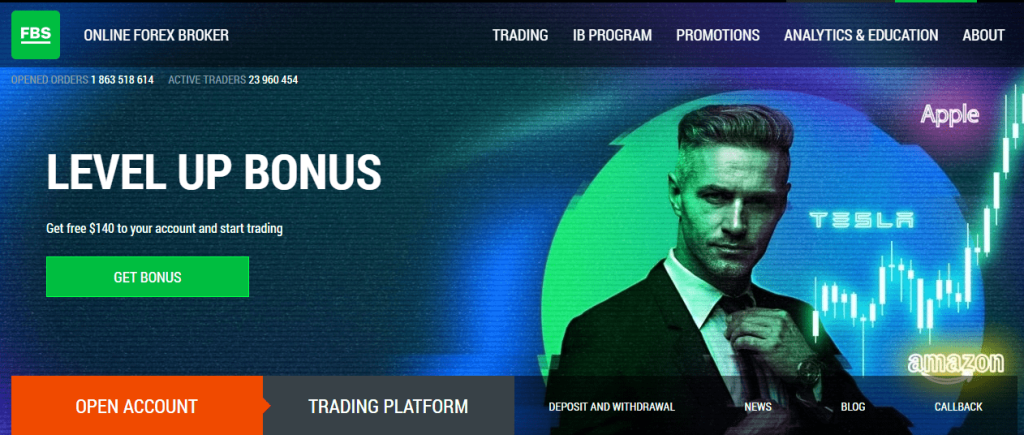
FBS is an international forex broker that has been in operation since 2009. The broker has quickly gained recognition in the global trading community for its comprehensive service offerings, client-centric approach, and commitment to transparent trading conditions.
FBS provides a wide range of financial instruments for trading, including forex, commodities, cryptocurrencies, stocks, and indices. The broker accommodates traders of all experience levels by offering several types of trading accounts, each tailored to different trading strategies and risk tolerance levels.
FBS utilizes the popular MetaTrader 4 and MetaTrader 5 platforms, providing clients with advanced trading tools and features, along with the capability to trade on the move using their mobile devices. Furthermore, FBS is known for its high-quality educational resources, including webinars, video lessons, tips, and analytical materials, making it a good choice for beginners.
FBS operates under the regulation of the International Financial Services Commission (IFSC) and the Cyprus Securities and Exchange Commission (CySEC), ensuring client fund safety and business transparency.
Advantages and Disadvantages of Trading with FBS
Withdrawal and Fees of FBS
FBS employs a transparent fee structure. Depending on the account type, they offer both spread-only and commission-based pricing. For instance, the Standard Account is commission-free with spreads starting from 0.5 pips, while the ECN Account features spreads from -1 pip but charges a commission.
FBS generally does not charge deposit fees, but withdrawal fees vary depending on the payment method. For instance, for bank wire transfers, the broker charges a $30 fee. It's crucial to note that your bank or e-wallet provider may also impose a charge.
FBS applies an inactivity fee of $5 per month if an account is dormant for six months or more. However, this is only applied if the account balance is greater than zero.
As fees and charges may change over time, traders should always refer to the official FBS website or consult their customer support for the most current and accurate information about their withdrawal procedures and fee structure.
#8. FXPro
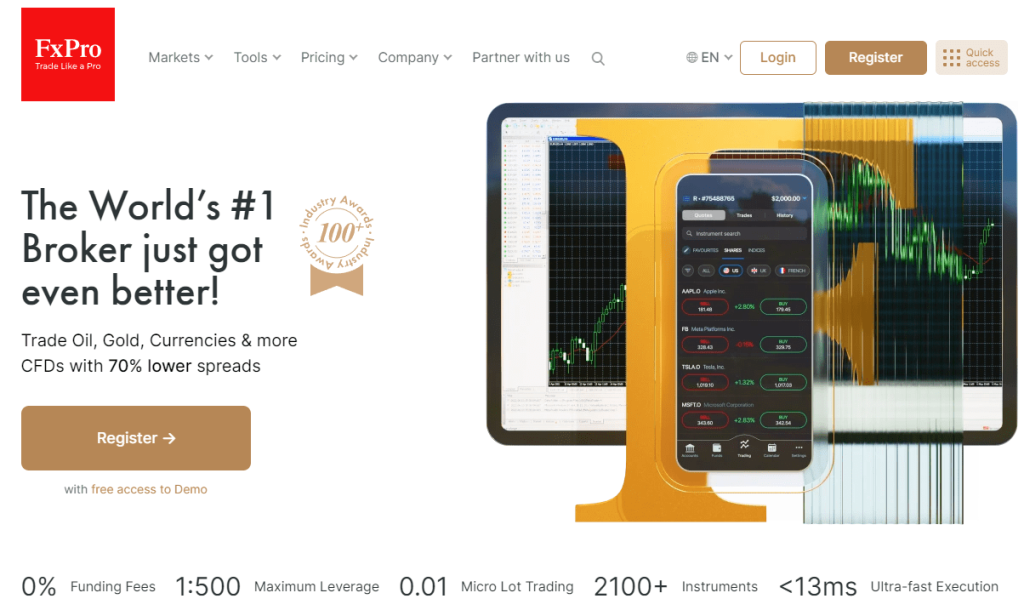
FXPro is a leading online broker that has been in operation since 2006, with a significant global presence and a client base that spans across more than 170 countries. The broker specializes in offering Contracts for Difference (CFDs) on Forex, futures, indices, shares, spot metals and energy commodities.
One of the unique features that set FXPro apart from its competitors is the multitude of trading platforms it offers to its clients. This includes MetaTrader 4, MetaTrader 5, cTrader, and its own proprietary FxPro Edge platform. Each of these platforms caters to different types of trading styles, strategies, and preferences.
Regulated by top-tier authorities such as the Financial Conduct Authority (FCA) in the UK, the Cyprus Securities and Exchange Commission (CySEC), and the Dubai Financial Services Authority (DFSA), FXPro is well recognized for its commitment to maintaining a high level of trust and transparency in its operations. Moreover, the broker places a strong emphasis on providing quality customer service and access to an array of educational resources, making it a great choice for both beginner and experienced traders.
Advantages and Disadvantages of Trading with FXPro
Withdrawal and Fees of FXPro
FXPro's pricing model is based on spread and commission, depending on the type of account and platform you choose. The broker offers four different account types – MT4, MT5, cTrader and FXPro Edge, each with its own unique fee structure.
For instance, with the MT4 account, FXPro earns its revenue from the spread with no additional commission. The spread on the EUR/USD pair is variable, starting from 1.6 pips. On the other hand, the cTrader account operates on a commission-based system where the commission is $45 per $1 million traded, and the spreads start from 0.2 pips.
In terms of non-trading fees, FXPro charges no deposit fees and offers free credit card withdrawals. However, a small fee is charged for withdrawals through other methods such as bank transfers. The broker also charges an inactivity fee of $15 (or currency equivalent) per month after 12 months of account dormancy.
Always ensure to check the latest fee details on the FXPro website or through their customer support to avoid any surprise costs.
#9. OANDA
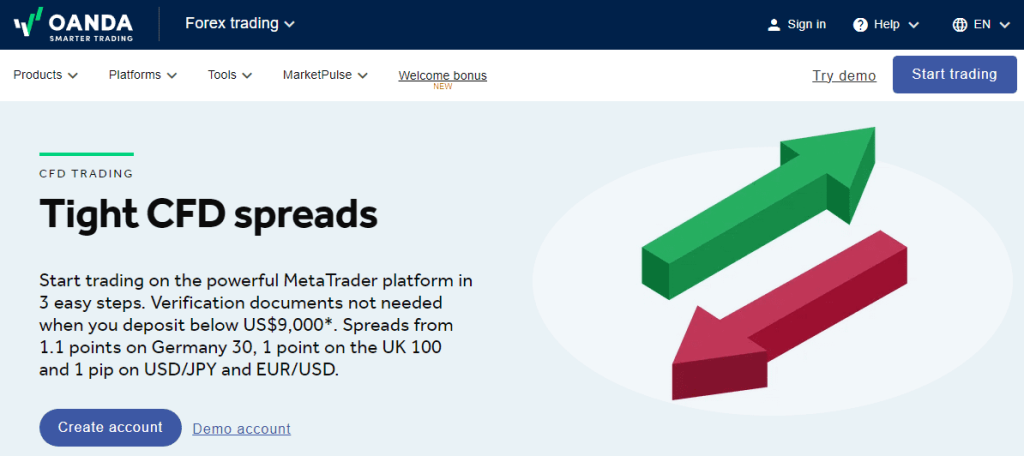
OANDA is a pioneering forex and CFD broker with a global presence and a long-standing history dating back to its establishment in 1996. Known for providing robust forex trading solutions, OANDA has won the trust of traders worldwide with its transparency, technological innovation, and commitment to customer satisfaction.
OANDA offers a comprehensive selection of trading instruments including forex pairs, indices, commodities, metals, bonds, and CFDs. It caters to traders of all skill levels, from beginners to advanced traders.
The broker uses the highly acclaimed MetaTrader 4 platform, as well as their proprietary fxTrade platform which was the first fully automated forex trading platform when it was launched. These platforms are packed with advanced trading features, analytical tools, and they are available on web, desktop, and mobile devices for trading on-the-go.
OANDA is regulated by several top-tier financial authorities, including the U.S. Commodity Futures Trading Commission (CFTC), the National Futures Association (NFA), and the Financial Conduct Authority (FCA) in the UK, thus ensuring a high level of security for traders.
Advantages and Disadvantages of OANDA
Withdrawal and Fees of OANDA
OANDA operates on a spread-only pricing model, with no commission fees on trades. The broker offers competitive spreads that vary by account type and market conditions.
In terms of withdrawal fees, OANDA offers one free monthly withdrawal for clients. Any subsequent withdrawals within the same month attract a fee. The fee depends on the withdrawal method: for example, a bank wire transfer withdrawal incurs a fee of $20 in the US.
OANDA charges an inactivity fee of $10 per month for accounts with no trading activity for 12 months, but only if the account balance is above zero.
It's important for traders to note that OANDA’s fee structure can change, and as such, it's always recommended to review the most up-to-date information on their website or contact their customer service for precise details.
The Forex Trading Situation In The US
To explain the complexity of the forex trading situation in the US and how radically different it is from other places, let's first examine the norm in the EU.
More relaxed regulatory laws in Europe guarantee brokers the right to offer their services to traders across the EU, as long as they receive a license from any European regulators.
What it means is that a broker that's regulated by the Cyprus Securities and Exchange Commission (CySEC), for instance, can accept traders from countries that identify as members of the European Union.
Like we said earlier, the rules are wildly different in the US because US-based forex brokers play by more stringent regulations. US clients are off-limits to brokers with an EU license. So, brokers willing to operate in the US must first get the required license from the National Futures Associated (NFA) and be prepared to face stricter regulations and harsher punishments.
Also read: Best Forex Trading Platform
The Dodd-Frank Act
Recent forex traders in the US may have found themselves wondering why the regulations are so much stricter for American brokers. Here's the reason.
The Dodd-Frank Act Wall Street Reform and Consumer Protection Act was signed into law in 2010 by then-President Obama. The act became necessary after scores of traders suffered immense losses to financial institutions and brokers. The new act set a higher threshold for brokers, revolutionized the space, and encouraged financial institutions to be more transparent and accountable.
Predictably, many retail traders and brokers, unable to cope with the new reality, left the country, changing the outlook of the American retail scene profoundly. Nowadays, only a limited number of brokers operate in the UK. It's for this exact reason that there's a shortage of forex brokers accepting US clients.
The Enforcers: The CFTC and the NFA
The CFTC and NFA are responsible for the enforcement of this law and the regulation of the US forex market.
Forex brokers must first register with the CFTC to operate in the United States. Not only do forex brokers based in the United States have to register with the CFTC, but non-US-based forex brokers can also do so if they want to serve US clients.
The NFA is a division of the CFTC that administers regulatory programs to protect the integrity of the Forex market, and US Forex brokers must register with the NFA. The NFA's mission is to ensure that individuals and businesses involved in the financial industry in the United States follow fair and ethical business practices.
Both organizations collaborate to ensure that member US forex brokers ’ activity complies with their rules. In the event of a consumer dispute, the NFA and the CFTC will judge the case the way they see fit and recommend and enforce punishment.
FAQs
Q: Forex brokers who accept US clients?
A: In spite of the Dodd-Frank Act, there are still several brokers willing to accept clients from the US. Brokers such as Forex.com, OANDA, IG, TD Ameritrade, Nadex, eToro, and CedarFX are open to US traders.
Q: Non-US forex brokers who allow US clients
A: Several off-shore forex brokers still accept US clients. Here’s a detailed list of them:
- 1Billion Forex
- 1Broker
- AAFX Trading Company
- AL Trade Inc
- ATC Brokers
- ATS Markets Global
- BuzzFX
- Capital Street FX
- Coinexx
- DV Markets
- Eagle FX
- Evolve Markets Ltd
- FinFX
- Forest Park FX
- Forex Broker Inc
- com
- Fullerton Markets
- FX Trading Pro
- FXChoice
- FXGlory
- FxPlayer Ltd
- GAIN CAPITAL
- Interactive Brokers
- LMFX
- LQDFX
- Nova FX Trading
- OANDA
- PaxForex
- PCM Brokers
- Profiforex
- TD Ameritrade
- Turnkey Forex
- Uniglobe Markets
Q: What forex brokers that accept US citizens trade gold?
A: Due to the Dodd-Frank act that proscribed the trading of CFDs, US citizens cannot trade gold.
Q: What are the best US forex brokers?
A: The best forex brokers in the US are FOREX.com, AD Ameritrade, IG US, and Nadex.
Q: How to trade with forex brokers that do not serve US clients?
A: It’s possible to trade with offshore brokers that do not serve US clients. Simply register an account with them, fill in your details, fund your new account, and you’re good to go.




